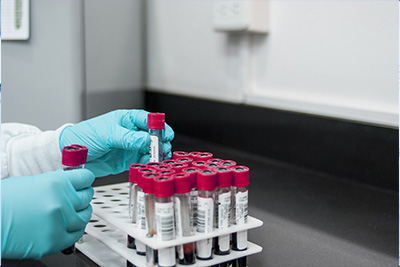-
![The Chemical Struc···]() 2025-01-08 The Chemical Structure of 2-Ethylhex···
2025-01-08 The Chemical Structure of 2-Ethylhex···This article explores the chemical structure of 2-ethylhexyl thioglycolate, an important compound in various industrial applications. It delves into the molecular composition and properties that contribute to its significance in industries such as plasticizers, lubricants, and coatings. The detailed analysis highlights how its unique structure enables it to enhance product performance and meet specific industry requirements.
read more > -
![Di-n-butyltin Oxid···]() 2025-01-08 Di-n-butyltin Oxide (DBTO) as a Stab···
2025-01-08 Di-n-butyltin Oxide (DBTO) as a Stab···Di-n-butyltin oxide (DBTO) has been investigated as an effective stabilizing agent for polymeric materials, significantly enhancing the durability of plastics. This study explores the role of DBTO in preventing degradation caused by heat and UV radiation, which are common factors leading to material weakening and discoloration. The results indicate that incorporating DBTO into plastic formulations improves thermal stability and prolongs service life, making it a valuable additive for industries reliant on high-performance plastics. Overall, DBTO demonstrates promising potential in extending the longevity and quality of polymeric products under challenging environmental conditions.
read more > -
![Dibutyl Tin Dilaur···]() 2025-01-08 Dibutyl Tin Dilaurate: Its Function ···
2025-01-08 Dibutyl Tin Dilaurate: Its Function ···Dibutyl tin dilaurate (DBTDL) is a key organotin compound widely used as a catalyst in various chemical processes, particularly in polymer synthesis. Its function lies in enhancing the reaction rates and controlling molecular weights of polymers, making it indispensable in industries such as plastics and coatings. DBTDL's efficiency in facilitating transesterification and condensation reactions contributes significantly to the production of polyurethanes, polyesters, and epoxies. Additionally, its applications extend to the medical field where it serves as a catalyst in certain drug synthesis processes. Due to its robust catalytic properties, DBTDL ensures precise control over polymerization, thus optimizing product quality and performance in numerous industrial applications.
read more > -
![n-Butyltris(2-ethy···]() 2025-01-08 n-Butyltris(2-ethylhexanoate): Its R···
2025-01-08 n-Butyltris(2-ethylhexanoate): Its R···"N-Butyltris(2-ethylhexanoate)" plays a crucial role in stabilizing plastics during polymer manufacturing. This chemical compound acts as an effective stabilizer, preventing degradation and enhancing the overall quality and longevity of plastic products. By incorporating it into the manufacturing process, manufacturers can improve the resistance of plastics to heat, light, and other environmental factors, thus extending their service life and broadening their application scope.
read more > -
![Tetra Butyltin: Ch···]() 2025-01-08 Tetra Butyltin: Chemical Properties ···
2025-01-08 Tetra Butyltin: Chemical Properties ···Tetra butyltin is a chemical compound with the formula Sn(C4H9)4. It is a colorless liquid with a strong odor. This compound is widely used in the manufacturing industry due to its unique properties, such as excellent heat stability and strong catalytic activity. In particular, tetra butyltin is utilized in the production of polyvinyl chloride (PVC), as a heat stabilizer and lubricant. Additionally, it finds applications in the synthesis of various organotin compounds, serving as a precursor. Due to its effectiveness in enhancing product quality and process efficiency, tetra butyltin plays a crucial role in numerous industrial processes. However, its use must be carefully managed given its potential environmental and health impacts.
read more > -
![Tri-n-butyltin Hyd···]() 2025-01-08 Tri-n-butyltin Hydride: Impact and U···
2025-01-08 Tri-n-butyltin Hydride: Impact and U···Tri-n-butyltin hydride (Bu3SnH) is an essential organometallic reagent known for its ability to transfer hydride ions in radical reactions. Commonly used in organic synthesis, it plays a crucial role in the reduction of various functional groups, such as carbonyls and double bonds. Its unique reactivity makes it valuable in polymer chemistry, where it facilitates controlled radical polymerization. Safety considerations are paramount due to its toxicity and potential health hazards. Understanding its impact and applications is vital for chemists involved in advanced synthetic procedures and materials development.
read more > -
![O-Isopropyl Ethylt···]() 2025-01-08 O-Isopropyl Ethylthiocarbamate in th···
2025-01-08 O-Isopropyl Ethylthiocarbamate in th···The article discusses the utilization of O-Isopropyl Ethylthiocarbamate in the synthesis of organotin compounds, highlighting its significant applications in the field of organic chemistry. This compound serves as an important intermediate in the preparation of various organotin derivatives, which are widely used in areas such as materials science, pharmaceuticals, and agrochemicals. The synthesis process and its potential impacts on advancing organic chemistry research are explored, emphasizing the versatility and importance of O-Isopropyl Ethylthiocarbamate in creating novel organotin compounds.
read more > -
![Dimethyltin Dichlo···]() 2025-01-08 Dimethyltin Dichloride and Its Indus···
2025-01-08 Dimethyltin Dichloride and Its Indus···Dimethyltin dichloride (DMTC) plays a crucial role in chemical synthesis due to its reactivity and versatility. It is commonly used in industrial processes, particularly in the production of agrochemicals, polymers, and pharmaceuticals. DMTC reacts efficiently with alcohols, amines, and thiols to form various tin organic compounds. These reactions are pivotal for synthesizing complex molecules with precise control over their structure and functionality. Additionally, DMTC's ability to form coordination complexes enhances its utility in catalytic applications. Despite its toxicity, proper handling and containment ensure safe usage in controlled environments, underscoring its significance in modern chemical manufacturing.
read more > -
![2-Ethylhexyl Thiog···]() 2025-01-08 2-Ethylhexyl Thioglycolate in Polyme···
2025-01-08 2-Ethylhexyl Thioglycolate in Polyme···2-Ethylhexyl thioglycolate (EHT) is a key reagent in polymerization reactions, playing a crucial role in the production of various polymers. Its unique properties make it indispensable for enhancing the efficiency and quality of polymerization processes. EHT acts as an effective chain transfer agent, regulating molecular weight and improving the control over polymer architecture. This compound is widely used in industries such as plastics and coatings, contributing significantly to the development of advanced materials with superior performance characteristics.
read more >









